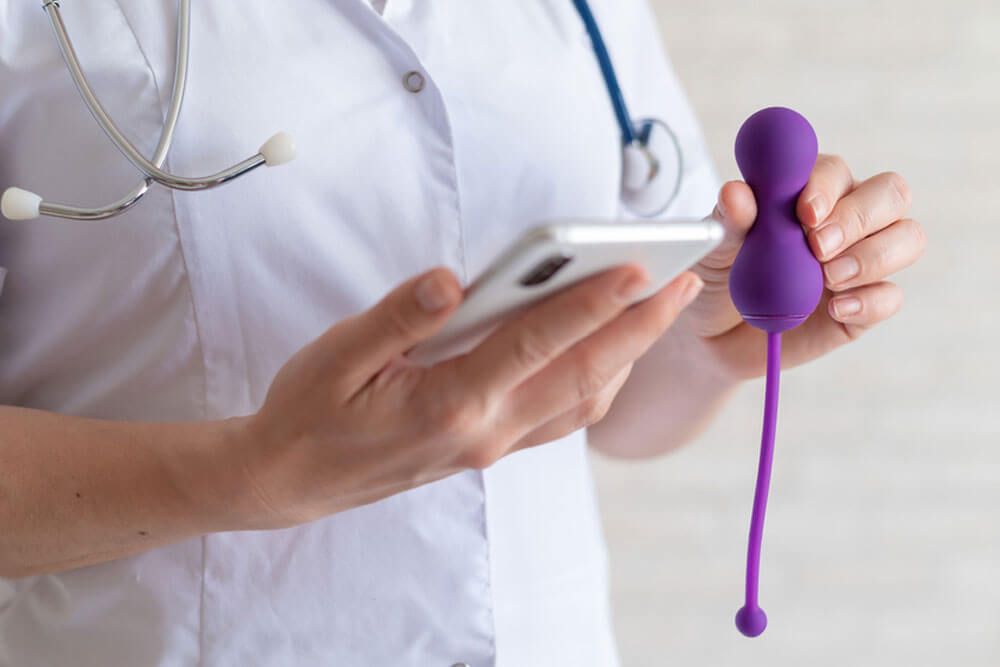Pelvic floor muscle rehabilitation is a systematic approach for improving strength of the pelvic muscles. These muscles may be damaged due to childbirth, prior surgery, aging, and several other factors. The “pelvic floor” muscles are very important structures in the pelvis which are responsible for supporting the female pelvic organs (uterus, rectum, bladder). Pelvic floor muscle rehabilitation uses many of the same principles as physical therapy for other damaged muscles in the body.
What types of conditions can be helped with pelvic floor muscle rehabilitation?
Any condition which arises from damaged or weak pelvic floor muscles may be treated with pelvic floor rehabilitation. The most common conditions we treat with pelvic floor muscle rehabilitation is urinary incontinence, urinary frequency, urgency, and fecal incontinence. Women with pelvic pain due to pelvic muscle spasm may also benefit from this therapy.

- The pelvic floor muscles are comprised of the levator ani muscles, which include the pubococcygeus, puborectalis, and iliococcygeus muscles.
- The pelvic floor muscles are responsible for assisting in urinary and fecal continence.
- These muscles can be damaged after childbirth and previous pelvic surgery. Likewise, they may be weakened as a result of aging and menopause.
Where is this treatment performed?
Currently, we offer this therapy at our Whippany office.
What is “biofeedback?”
Biofeedback is a process which enables an individual to learn how to change physiological activity for the purpose of improving health. Precise instruments measure physiological activity such as muscle activity, which then “feeds back” information to the brain. Biofeedback has been used for urinary problems for decades.
What is “E-stim?”
E-stim is electrical stimulation which is applied to muscles in order to cause them to contract. When combined with biofeedback, it can provide significant improvements in the ability of patients to use their pelvic floor muscles to stay continent.
What is involved with the Pelvic Floor Muscle Rehabilitation and E-Stim program?
You will be scheduled to have approximately 20-30 minute sessions weekly, for a total of four to six weeks. During the sessions you can expect the following:
- EMG patches will be placed on the skin to measure pelvic and abdominal muscle activity.
- A small electrode will be inserted into the vagina and/or the anus to stimulate the pelvic muscles
- We will teach you how to contract and relax the appropriate muscles so you can continue these at home.
Can’t I just do Kegel exercises at home to stay continent?
Kegel exercises are voluntary contractions of the external urethral sphincter muscle which have been proven to improve stress incontinence in both men and women. While Kegel exercises are helpful, there are additional muscle groups that assist in continence. Using electrical stimulation we are able to increase the force of the pelvic muscle contractions and make the return to continence quicker.
Are there any risks associated with the Pelvic Floor Muscle Rehabilitation program?
PFMR, including E-stim is considered to be a non-invasive, painless treatment for a variety of urologic and non-urologic disorders. They have both been utilized for decades and have little or no risk to patients. Please consult your physician with any specific questions.


